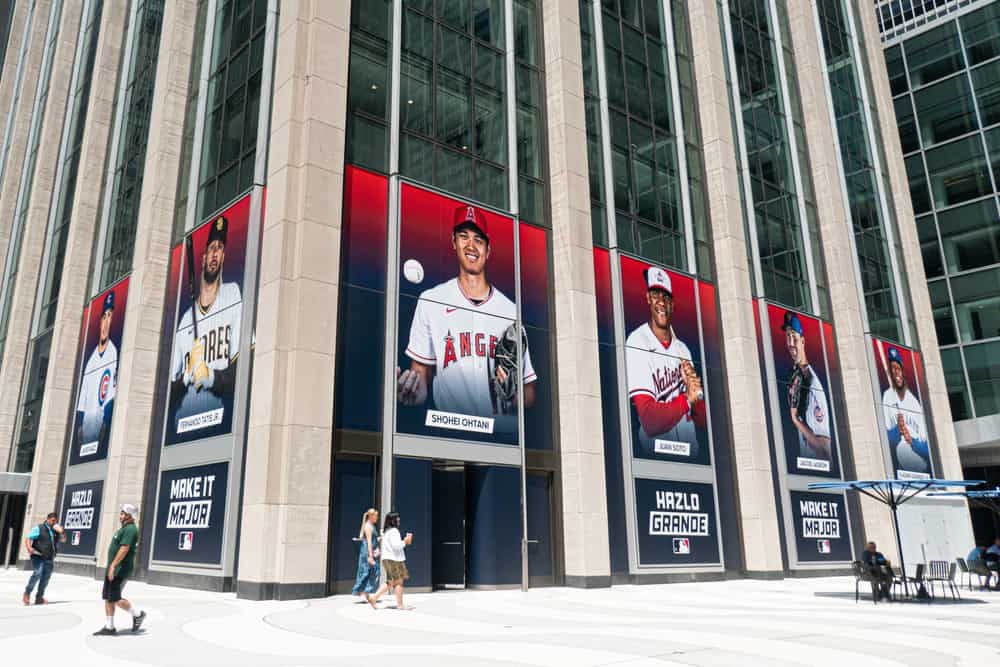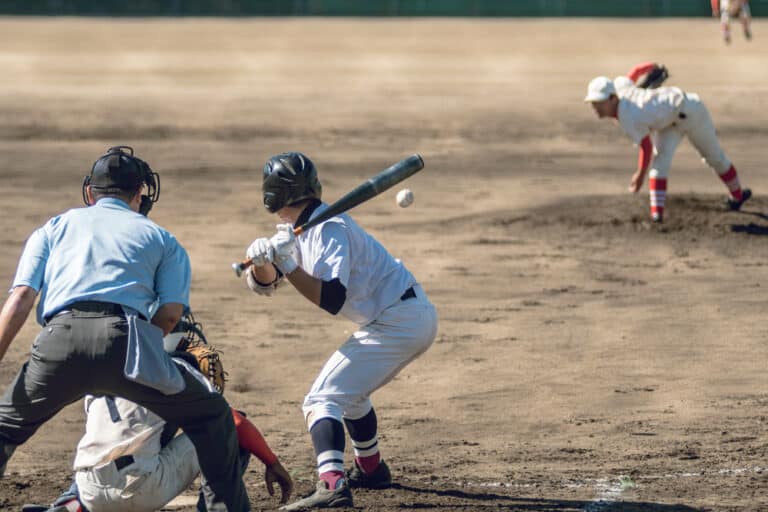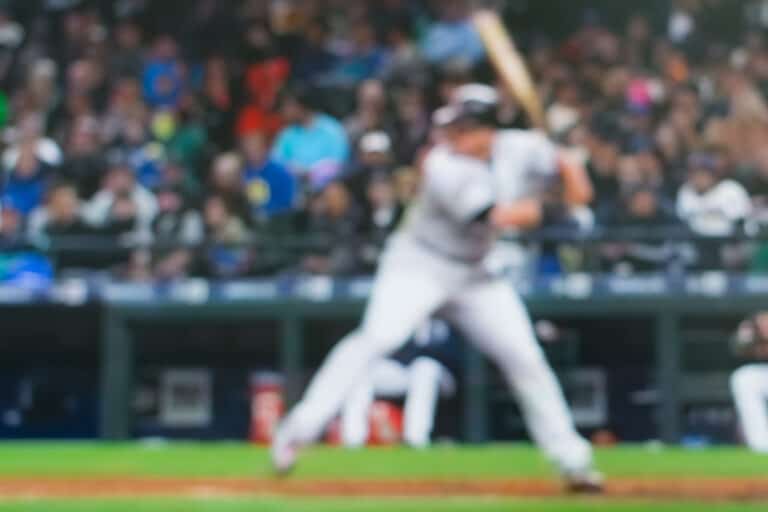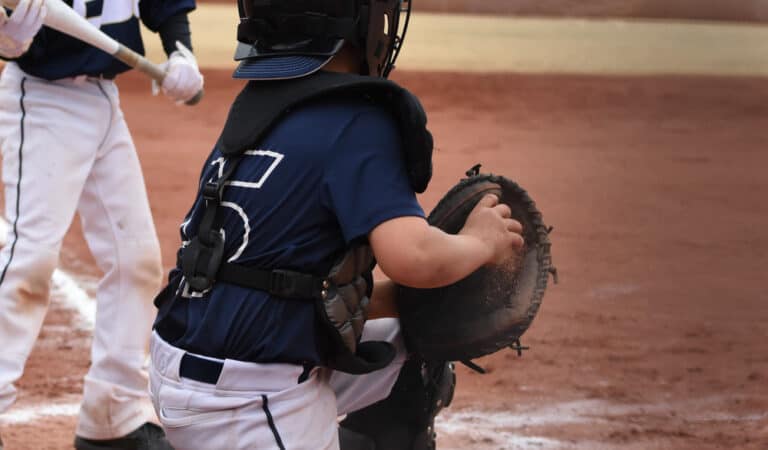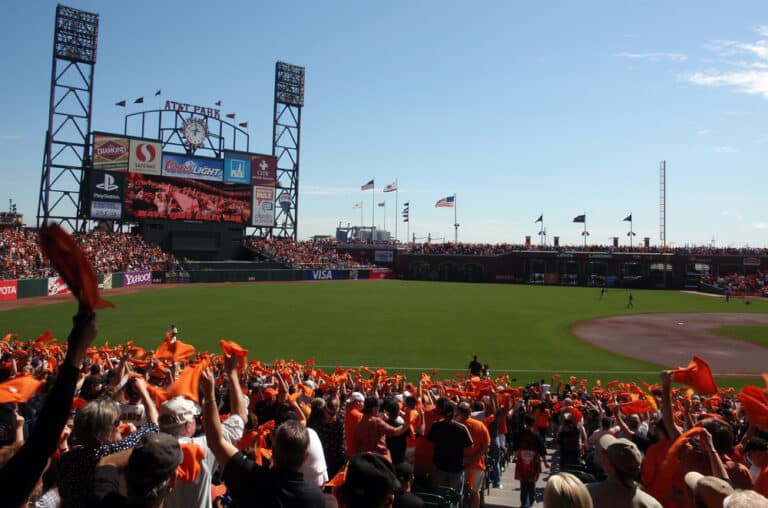How Does The MLB Draft Work: Complete Guide
Image editorial credit: MNAphotography / Shutterstock.com
From the first amateur MLB draft back in 1965, it has become the yearly highlight of eligible prospective baseball talent to possibly progress to the next level in their favorite sport. But, of course, there is money in the sport, and it can be a lucrative career for successful candidates. Therefore, when a team selects a player, he stands a chance of a contract that will pave the way for a professional baseball career.
The annual June Major League Baseball Draft allows their 30 respective clubs to sign the best high school and college baseball players. The Draft consists of 20 rounds over three days. In addition, later in December, The Rule 5 Draft provides the cross-selection of non-40-man roster players.
The drafting process is not too complicated but comprehensive, and most fans do not understand it. Therefore, it does not attract the amount of excitement and discussions that it should. In addition, rules guide the process to ensure fairness and good talent is not overlooked. So, what are the MLB Draft ins and outs, and how can we make it more understandable?
The Major League Baseball Yearly Drafting Process
It is indeed an achievement to be one of only a few hundred drafted players chosen from thousands of participants. Although the next MLB Draft will only be in 2023, it is always wise to understand the MLB drafting process. Therefore, you may improve your chances and ensure eligibility if you know the rules and procedures.
Firstly, the MLB Draft is a process to assign amateur baseball players to Major League Baseball (MLB) teams. Secondly, only drafted and selected college and high school players will have the honor to step up and begin the next phase in their sports career in the major leagues. Thirdly, the original 40-round process was amended in 2020 to only 20 rounds over three days.
Lastly, specific named rules accompany the drafting process—for example, the Rule 4 and 5 Drafts. Rules are necessary to guide and regulate the process to ensure fairness and inclusivity. In addition, drafted players rarely go straight to the Majors without first playing in the Minors. After that, it may take a couple of years to progress to the highest level.
The History And Purpose Of The MLB Draft
Initially, and before the creation of the First-Year Player Draft, amateur players could sign with any Major League team. However, the result was an unfairly spread of talent to mostly wealthier clubs, while poorer clubs ended up with the leftovers.
Then, in 1965, the MLB held the first amateur Draft where teams chose prospective players in reverse order – the previous season’s lower ranked teams had the opportunity to pick first. Also, should two teams end with the same standings, the team with the worse rating will get the higher pick.
The MLB Draft identifies, attracts, and attains Baseball’s most promising young players and distributes them throughout various clubs. Therefore, it allows them their first opportunity at professional Baseball when the more than 600 eligible drafted players form a pool to be selected in only a few days. In addition, the First-Year Player Drafts are held in June, which is the middle of the Baseball season.
As with any professional sport, it is not only about prospective new talent but also about money and ensuring enough talent and positional fit for the future. Even so, the MLB Draft process will sign only about ten percent of all senior male baseball players.
The MLB Draft Player Eligibility
The first question is, which players are MLB Draft eligible? First, the players must be United States, Canadian, or U.S. territory residents. Also, they must be at least 17 years of age and have graduated from high school but not attended college yet. However, community or junior college students are eligible once they have completed the first year.
In addition, those players who have completed at least one year of college are also draft eligible. However, four-year college students are only suitable in their last college year or after their 21st birthday. This eligibility is also valid even if the student dropped out before the first three years of college.
The MLB Player Drafting Process
MLB college baseball scouts will seek and note the top high school and college players for the next MLB Draft. The MLB will set up and release a list of eligible players for the draft process. The listed players may then optionally contact and share information with all the relevant MLB clubs before the Draft.
The MLB scouts will constantly research and engage with eligible players and their families to predetermine the player’s signability. This word is unique to the MLB and is key to the drafting process. For example, signability can be what it will entail signing the player about going to college or remaining in college or what it will take to sign that player if they draft him.
An eligible but unselected player from any team becomes a free agent, and any club may still sign him until one week before the next Draft. This closed period also disallows any club to sign any new players. In addition, high school players may opt to exclude their names from the draft list for consideration before the Draft if they do not want to participate.
Lastly, you may contact MLB if you feel you are eligible and talented enough and want to be included as a player in the MLB Draft list. Send them an e-mail E-Mail The Draft league.
The MLB Draft Player Pick Process
Normally, ESPN or a similar national television station will televise the first round of the MLB First-Year Player Draft. Then, typically, MLB.com will stream days 2 and 3.
The selection order in which teams pick players is the draft order and the reverse order of the team’s previous year’s standings. In addition, if two teams finish with identical records and the last year’s results are a tiebreaker, the team with the worst record will receive the higher pick. Therefore, Baseball teams can select players who they feel meet the eligibility requirements.
A compensatory or compensation pick is an extra pick allowed to teams who lost free agents in the previous off-season. For example, if a team gives a qualifying offer to a player who signs elsewhere, the club effectively loses that player and is eligible for Draft pick compensation.
In addition, competitive balance picks are rounds to allow additional picks to the ten lowest-revenue clubs and the ten teams from the smallest media markets. Competitive Balance Draft picks are the only picks that can be traded. However, they cannot be exchanged for cash, and only the awarded club can sell them. Therefore, changing these picks may only happen once.
Trade Draft Picks are generally not allowed. However, the trading of Draft picks only applies to competitive balance round picks. In addition, they cannot be exchanged for cash and cannot be re-traded. Also, during the picking process, a Signability value isawarded, typically the assumed value that a player could accept, and the team would offer to sign the player.
The signability also improves a player’s value if he is not signed initially and, if eligible, can be redrafted the following year. Bonus money is also available to offer players – these are Slot Values and are only applicable during the first ten Draft rounds’ first pick.
In addition, the Qualifying Offer is an average yearly value of the top 120 player contracts in the league. This value acts as the initial formal contract offer a free agent receives; therefore, the picking team then has the opportunity to match any offer from another club.

The MLB Draft Rounds
MLB and MLBPA agreed in March 2020 to halve the draft rounds from 40 to 20 due to the COVID-19 pandemic. As a result, the Draft ran over three days from then, covering twenty rounds of picks. Typically, day one will feature the first two rounds and the compensation picks. The notable feature of an event such as the MLB Draft is its size.
The first round of the MLB’s first-year player draft process represents the top available and eligible players within the U.S. The first ten rounds’ first picks have a slot value or signing bonus, and the first picks typically have the highest player values. Therefore, teams that spend “over slot” for a player can be penalized.
During the rounds, when players are picked and offered the Qualifying Offer value, they can either accept the offer or reject it. The 2022 MLB Draft ran from a Sunday to Tuesday, with the final 300 picks made in rounds 11 to 20, and more than 600 picks completed over the three days.
All the teams acknowledge they cannot sign every player on the draft list, but they also must look after and make potential players available to their respective minor league teams. However, there is no definite assurance that all of them will progress to the major leagues.
The MLB Draft Rule 4 and Rule 5
The Official Professional Baseball Rules Book has many rules, and specifically, rules 4 and 5 apply predominantly to the MLB Draft processes. Therefore, these rules are named for their position in the rule book.
The MLB’s First Year Amateur Draft is also commonly referred to as the Rule 4 draft, but the Rule 4 Draft is mainly the MLB’s essential process for signing amateur baseball players. Precisely, these players are drafted from high schools, colleges, and other amateur baseball clubs.
Some teams may be left short of the desired player values, and others have an excess of players. Therefore, there is also a specific and different Rule 5 Draft, which is the MLB Draft process usually held in December of each year. This process allows all clubs with less than the 40-man roster to select non-40-man roster players from other clubs.
In addition, the Rule 5 Draft has no limit on the number of players the teams can select, but the Major League part of the Rule 5 Draft allows the non-40-man roster players who were signed at 19 years or older and playing pro-baseball for at least four years may be selected.
Also, the Rule 5 draft attempts to prevent teams from accumulating too many junior players on their minor league teams while other clubs may be in a position to play them in the major leagues.
What Happens After A Player’s Selection To A MLB Team?
Once picked, the drafted player will not necessarily stay in the league and will go where the MLB club assigns him. In addition, after the draft process, rosters will still be available with other eligible players known for MLB clubs for the rest of the summer.
Players sign with a team for a one-time bonus and are usually assigned to a minor league team or sent for training. The MLB Pro-players get paid during the season only and receive no income when training. The specific minor leagues determine the players’ salaries.
When a player is selected, he usually has two choices: take the signing bonus and work for low income in the minor league for a few years, or go to college while the club pays his college fees. This way, they can return to college in the offseason or after their baseball-pro career.
It hardly happens that drafted and selected players go directly to the Majors without playing in the Minors. In addition, only about two-thirds of first-round selection players make it to the big leagues.
Lastly, selected players will go to where their MLB club assigns them.
Conclusion
The MLB Draft process involves the scouting, drafting, and selecting of top high school and college baseball players to the respective MLB clubs. The selection happens within set rules and guidelines in June of every year. The draft and pick processes consist of twenty rounds over three days, with the bottom log teams having first picking choices.
Only eligible players are drafted and made available for selection and possible signing to teams. In addition, The Rule 5 Draft in December allows non-40-man roster players to be selected by teams with a shortfall in their 40-man rosters.

